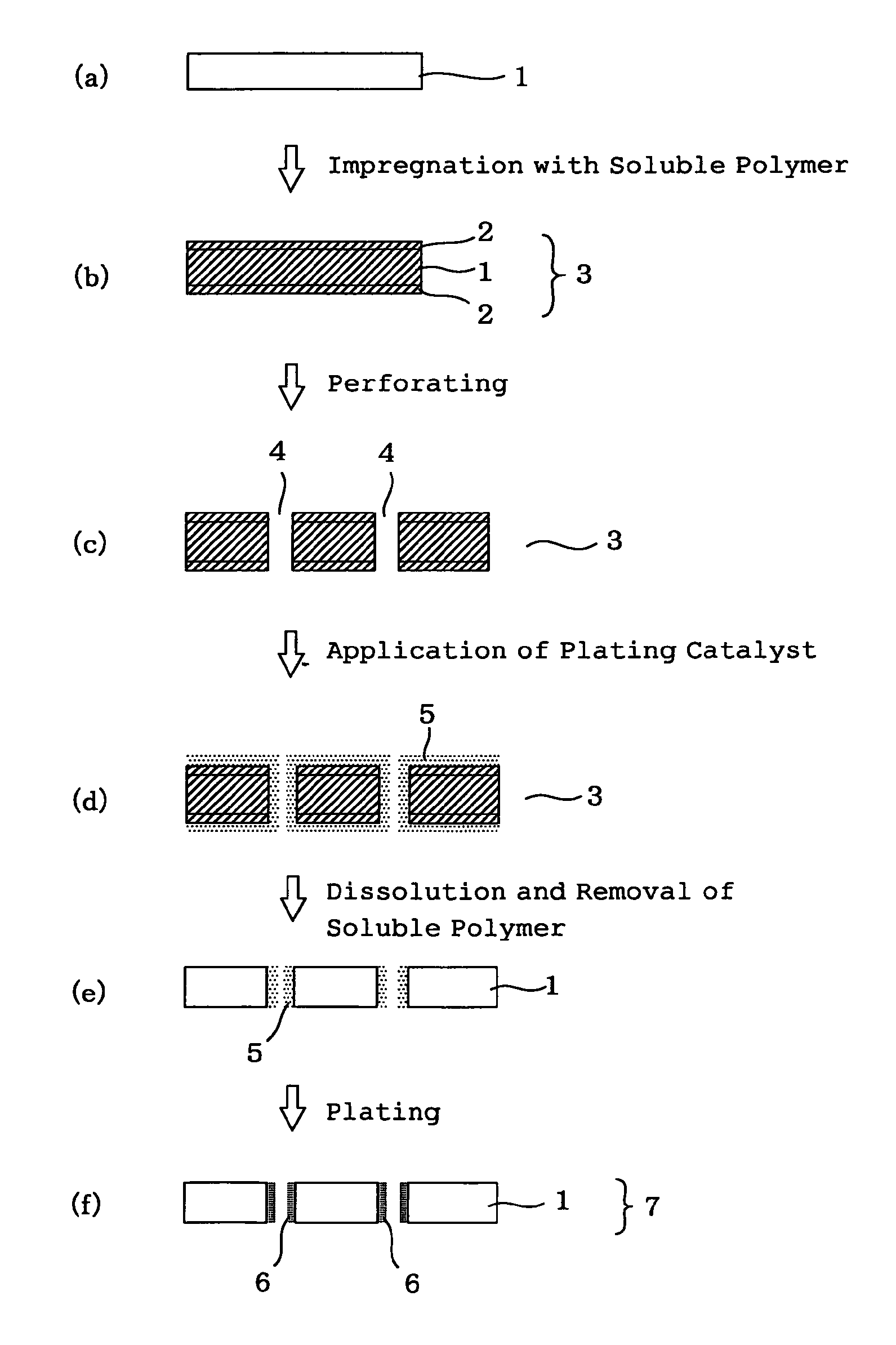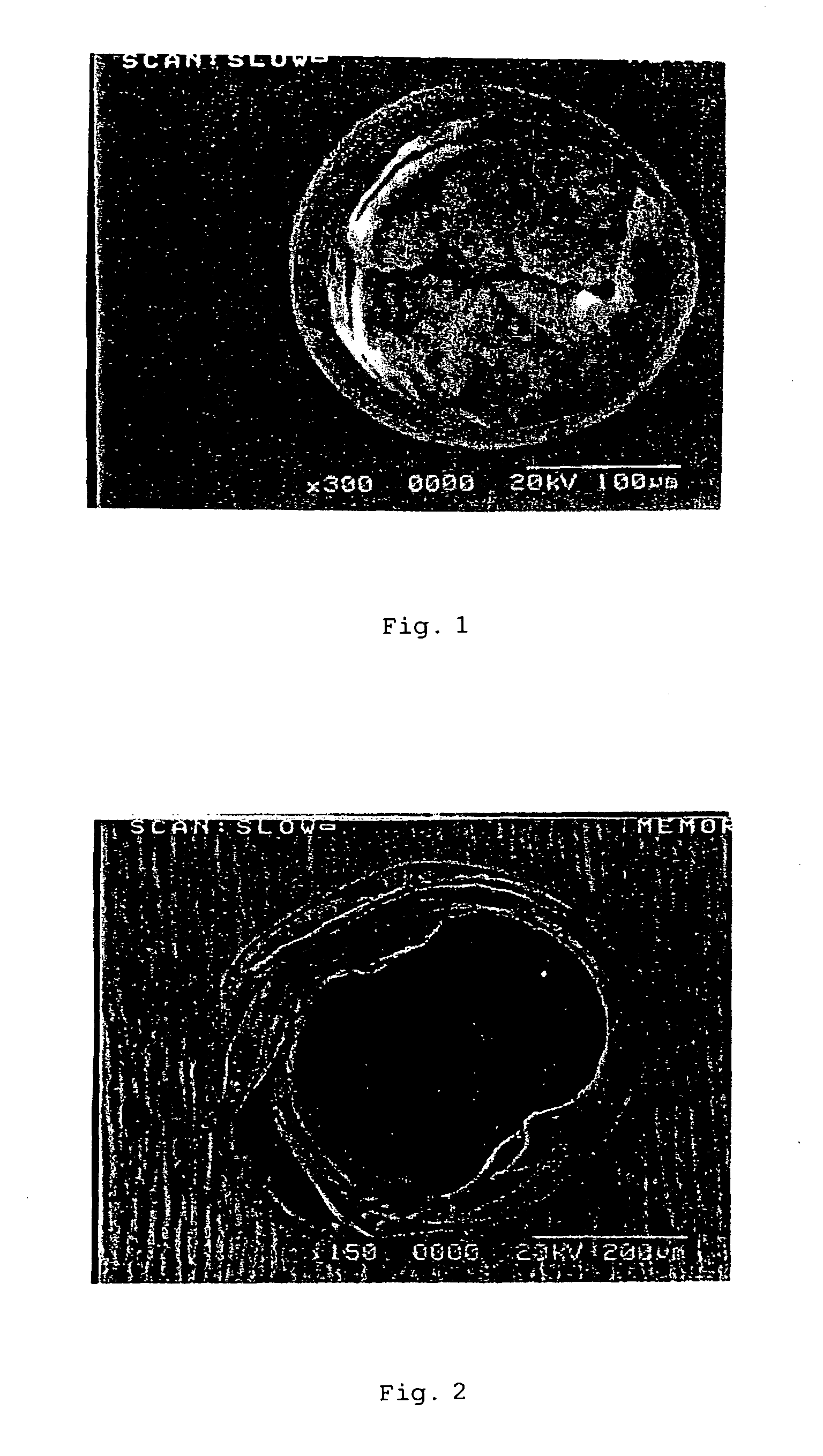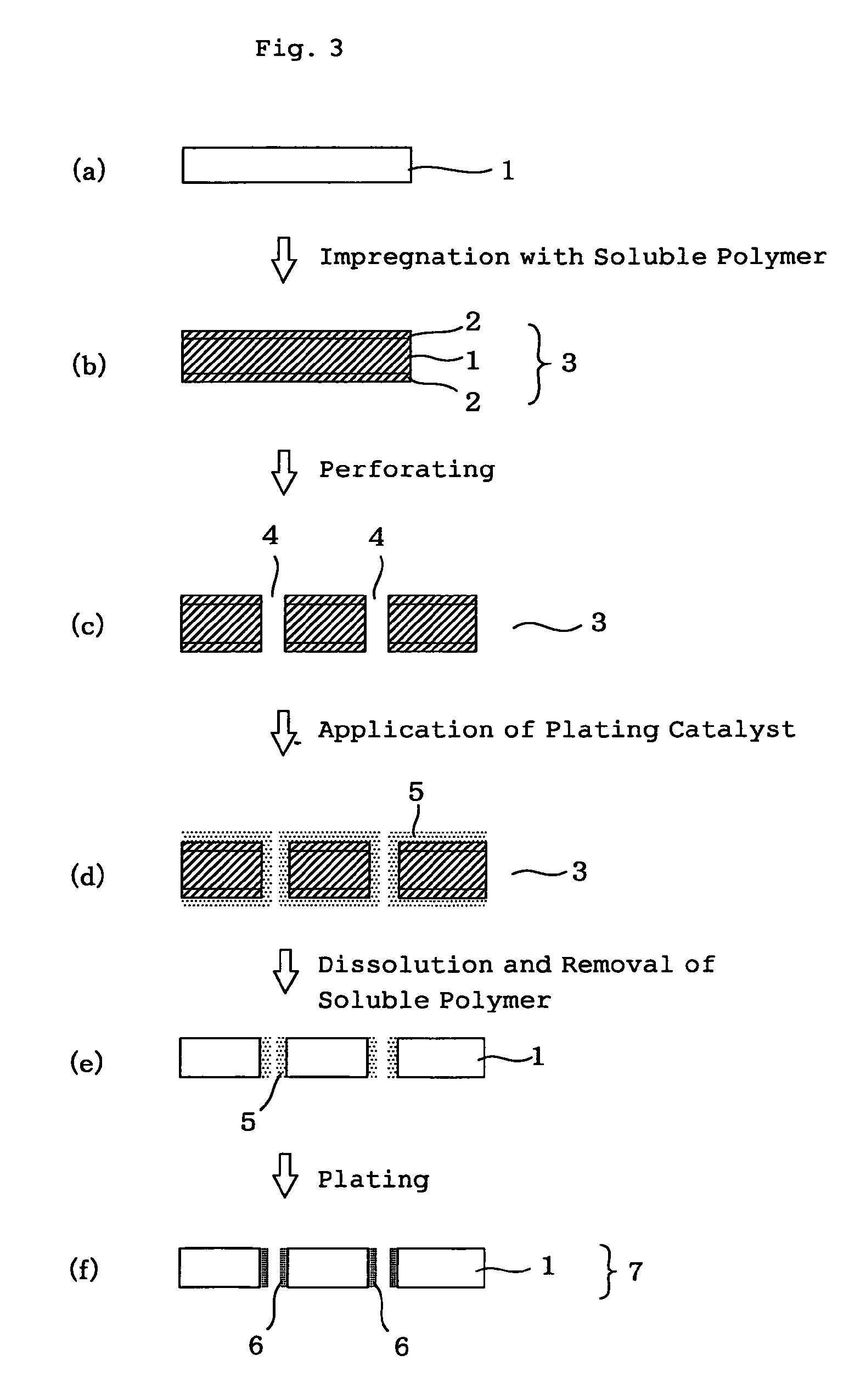Perforated porous resin base material and production process of porous resin base with inner wall surfaces of perforations made conductive.
a technology of porous resin base and perforation, which is applied in the direction of resistive material coating, porous dielectrics, metallic material coating processes, etc., can solve the problems of unsuitable perforation method, difficult to form perforations with high precision, and difficult to retain porous structur
- Summary
- Abstract
- Description
- Claims
- Application Information
AI Technical Summary
Benefits of technology
Problems solved by technology
Method used
Image
Examples
example 1
[0215]A porous PTFE base having an area of 10 cm2, a porosity of 60%, an average pore diameter of 0.1 μm and a thickness of 0.5 mm was provided. This porous PTFE base is an expanded PTFE sheet produced by an expanding process and having a microstructure comprising fibrils and nodes connected to each other by the fibrils.
[0216]After the expanded PTFE sheet was dipped in ethanol to subject it to a hydrophilization treatment, the thus-treated sheet was impregnated with water and cooled to 0° C. or lower to solidify water. The expanded PTFE sheet with the solidified water filled into the porous structure thereof was perforated by means of a combination of a punch and a die, which forms through-holes having a diameter of 250 μm. A perforating rate was 100 holes / min. After the perforating, the temperature of the sheet was returned to ordinary temperature, and water was removed by drying.
[0217]A perforated portion of the perforated sheet was observed through a microscope. As a result, it w...
example 2
[0218]After the same expanded PTFE sheet as that used in Example 1 was provided, impregnated with water and cooled to a temperature not higher than the solidifying point of water, the sheet was perforated by means of a blanking blade produced in such a manner that the diameter of through-holes formed is 1 mm. A perforating rate was 100 through-holes / 4 minutes. After the perforating, the temperature of the sheet was returned to ordinary temperature, and water was removed by drying. A perforated portion of the perforated sheet was then observed. As a result, neither deformation nor burr was observed at peripheries of the perforations like Example 1, and the microstructure of the peripheries of the perforations also retained the same form as other portions than the perforated portions.
example 3
[0219]After the same expanded PTFE sheet as that used in Example 1 was provided, impregnated with water and cooled to a temperature not higher than the solidifying point of water, the sheet was perforated by means of a drill controlled in such a manner that the diameter of through-holes formed is 250 μm. At this time, the number of revolutions of the drill was 100,000 rpm. A perforating rate was 100 through-holes / 2 minutes. After the perforating, the temperature of the sheet was returned to ordinary temperature, and water was removed by drying. A perforated portion of the perforated sheet was then observed. As a result, no burr was observed at peripheries of the perforations like Example 1, and no collapse of the periphery of the perforated portion was also observed.
PUM
| Property | Measurement | Unit |
|---|---|---|
| melting point | aaaaa | aaaaa |
| temperature | aaaaa | aaaaa |
| temperature | aaaaa | aaaaa |
Abstract
Description
Claims
Application Information
 Login to View More
Login to View More - R&D
- Intellectual Property
- Life Sciences
- Materials
- Tech Scout
- Unparalleled Data Quality
- Higher Quality Content
- 60% Fewer Hallucinations
Browse by: Latest US Patents, China's latest patents, Technical Efficacy Thesaurus, Application Domain, Technology Topic, Popular Technical Reports.
© 2025 PatSnap. All rights reserved.Legal|Privacy policy|Modern Slavery Act Transparency Statement|Sitemap|About US| Contact US: help@patsnap.com



